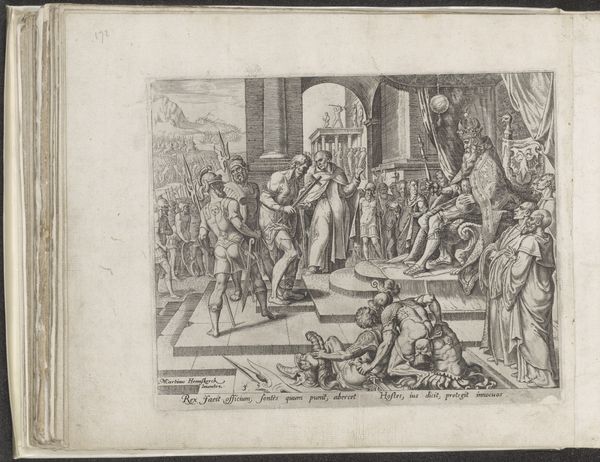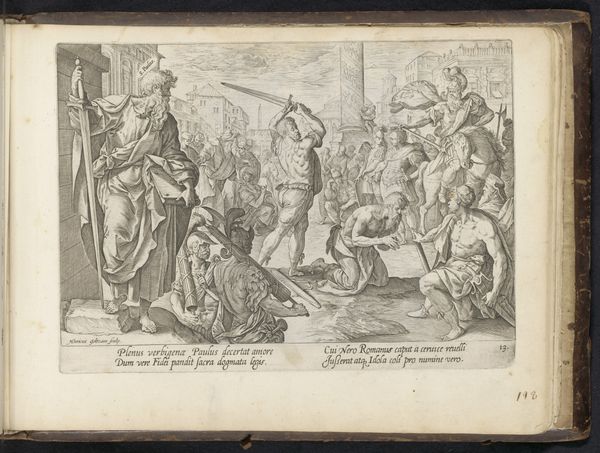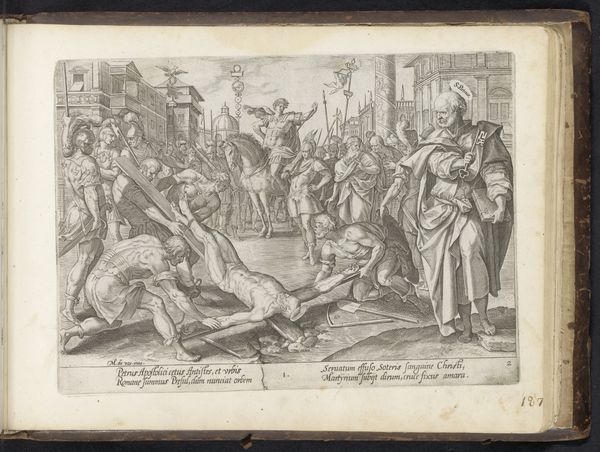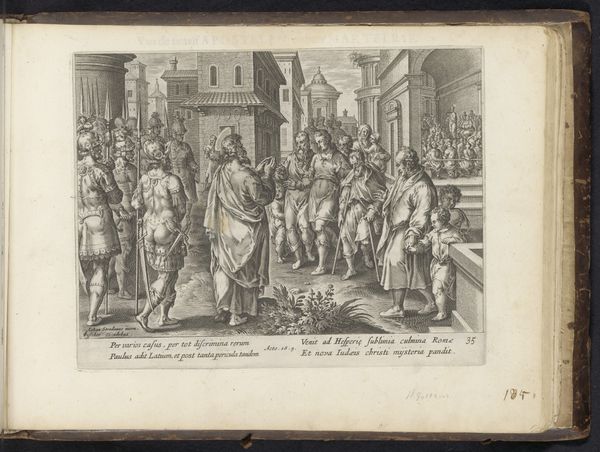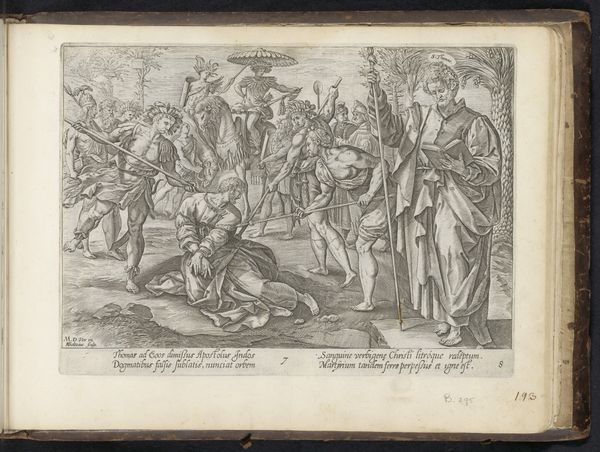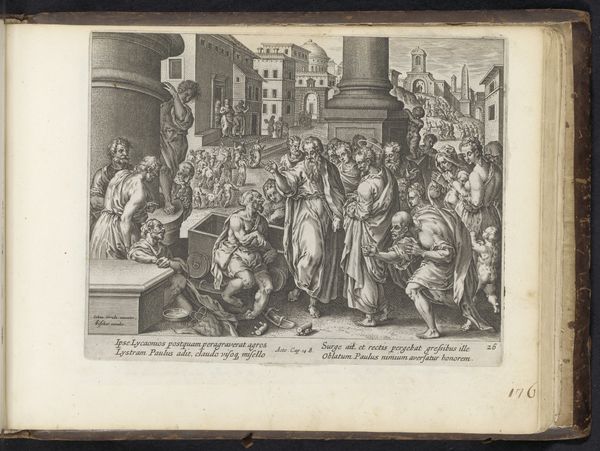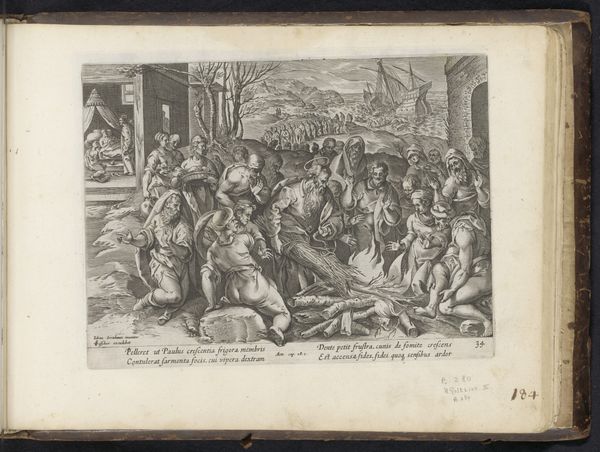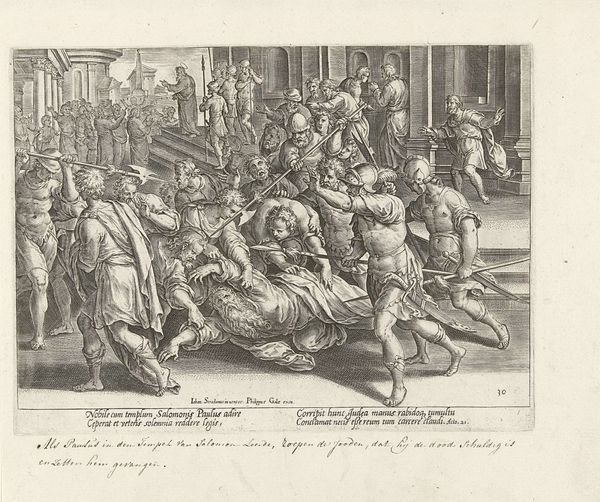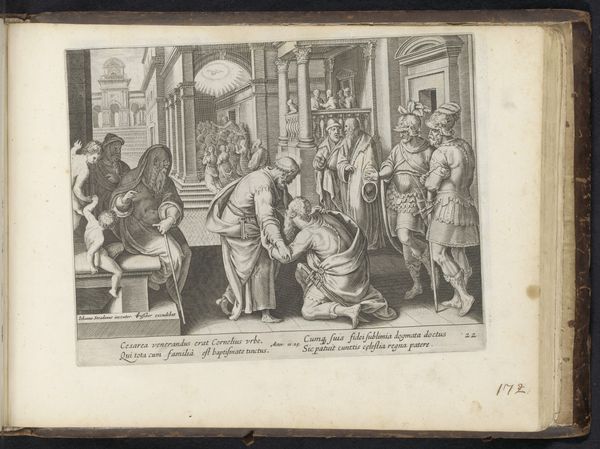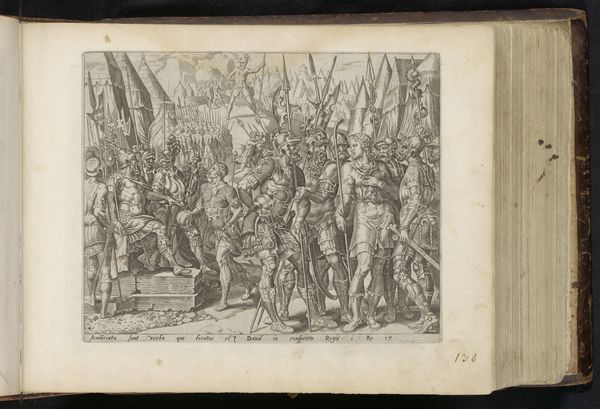
print, etching
#
narrative-art
#
baroque
# print
#
etching
#
figuration
#
coloured pencil
#
history-painting
#
watercolor
Dimensions: height 210 mm, width 262 mm
Copyright: Rijks Museum: Open Domain
Curator: This print, housed here at the Rijksmuseum, is titled "Gevangenneming van Paulus in Jeruzalem," or "The Imprisonment of Paul in Jerusalem." Dating from around 1643 to 1646, it’s an etching showcasing a scene rich with historical and religious context. Editor: Immediately, I’m struck by the sheer chaos and violence. There's a frenzied energy, a feeling of mob rule overpowering what should be a sacred space. Curator: The artist, who remains anonymous, captures a key moment from the New Testament: the apostle Paul being seized within the Temple of Jerusalem. Consider how this moment reflects the complex interplay between Roman rule, Jewish tradition, and early Christian belief. Editor: The depiction of the crowd is interesting. We see figures both enraged and impassive, all rendered with fine lines in this black and white scene. It raises questions about religious authority, power, and the vulnerability of individuals challenging established norms. Paul, quite literally, is at the bottom of it all. Curator: It's also worth noting the use of architectural elements. The artist strategically places Paul within a setting that is simultaneously grandiose and confining, alluding to the constraints placed upon his religious expression. The temple serves as a stage for this conflict. Editor: Looking at the visual dynamics, I observe how the crowd seems to move both toward and away from the focal point. There’s a push and pull dynamic suggesting an inherent instability within the social order of the scene, capturing the complexities of the socio-political dynamics represented. Curator: Furthermore, the text accompanying the etching would likely have shaped the viewer’s understanding. As we look closer, one might find themselves considering the ways in which such prints could be used as a visual form of historical record or even propaganda, shaping public sentiment surrounding early Christianity. Editor: Right, and that points to how art acts not only as a reflection but also as a shaper of societal viewpoints, both in the 17th century and perhaps in the ways we reflect on identity and power today. Curator: Indeed. "The Imprisonment of Paul in Jerusalem" reminds us that images are rarely neutral, but play an active role in constructing our understanding of history and faith. Editor: And that grappling with this visual representation allows us to discuss and reflect on our cultural legacies from the past.
Comments
No comments
Be the first to comment and join the conversation on the ultimate creative platform.

